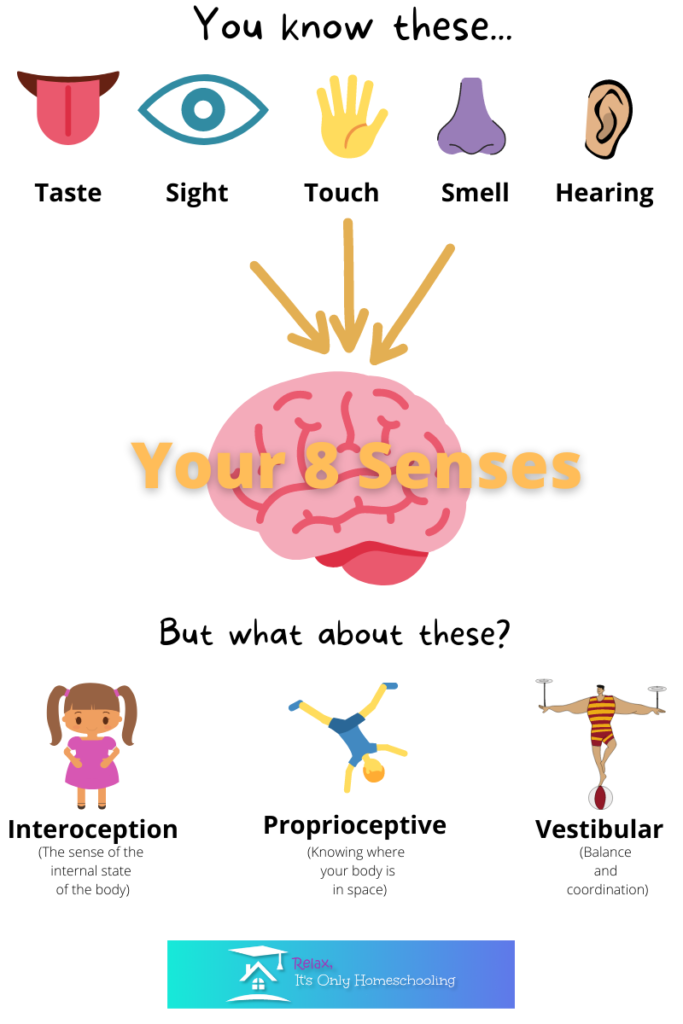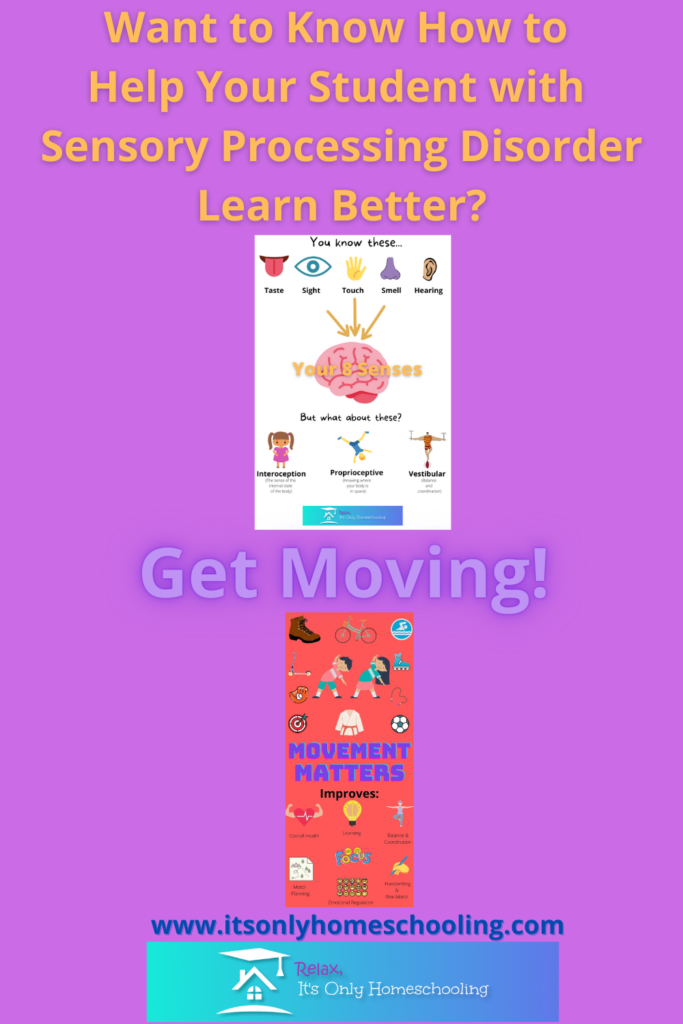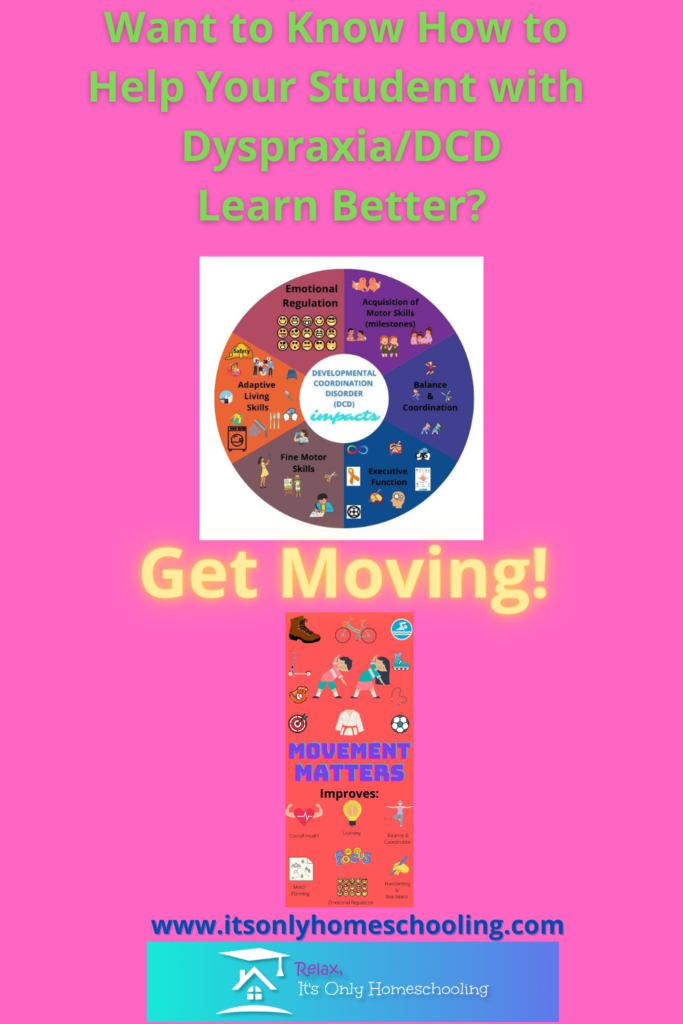Want to Help Your Child With Sensory Processing Disorder Get Better Grades? Get Moving! (Movement Matters Part 2)
Movement Matters
Earlier in the week, we began our three-part Movement Matters series. In Part 1, we discussed how incorporating consistent movement into your daily routine could enhance learning. Whether it is taking a walk around your neighborhood before breakfast, stretching at your desk after a lengthy lesson, relishing in mid-day recess, playing hard at P.E., or building in brain breaks as part of your day, movement is an essential component of successful learning.
But for children with learning challenges, it seems to be even more beneficial.
Our Sensory System
We receive input from our eight senses about the world around us and inside us. Yes, eight. The first five you are likely already familiar with – taste, sight, touch, smell, and hearing. The other three senses are interoception, proprioceptive, and vestibular.

Interoception helps us understand and feel what is going on inside our bodies, such as recognizing when we are hungry, thirsty, or need to use the restroom.
Proprioception is our “body awareness” sense. The proprioceptive system tells us where our body parts are in space without us having to look for them.
The vestibular system is responsible for movement, balance, and coordination.
Sensory Motor Integration
Sensory Motor Integration (or sensory processing as it is sometimes called) refers to the way a person’s nervous system receives messages from the senses to the brain, processes said information and then executes an appropriate motor response.
Sensory integration is required for EVERYTHING we do! Learning how to brush your teeth, drive a car, drink through a straw, walk, hold a pencil, sit upright in a chair, master math facts, grasp grammar, or read a book ALL require sensory integration.
For more information on sensory integration difficulties click here.

What is Motor Planning?
Motor planning is our ability to assert control over moving our bodies the way we want to. Basically, it consists of varied types of motor skills that we use repeatedly across the lifespan to accomplish our goals.
With gross motor skills, we utilize our large muscle groups to walk, jump, or maintain our balance. We utilize smaller muscle groups to help us perform tasks using our fine motor skills such as gripping a pencil or tying our shoelaces. Coordination allows for the use of both large and small muscle groups in an organized fashion so we move more efficiently.
While we may be unaware of it, there is a process that has to happen before we can use our motor skills effectively. This process involves us thinking about how we are going to move our bodies in order to accomplish the task at hand before we even begin the task.
In order to learn to do a task independently (such as teeth brushing for example) we:
- Observe: We watch another person model the skill we want to learn, taking note of the steps involved. (Parent brushes teeth in front of a small child. The child notes, “I run the toothbrush under the faucet. I put toothpaste on the toothbrush. I put the toothbrush in my mouth and move in circular motions on the top row and then the bottom row.”)
- Mental Rehearsal: We imagine in our minds how we will complete the task. (Child watches parent brush teeth and imagines doing the same steps.)
- Imitate: We attempt to replicate the steps we have just observed.
- Practice Task with Assistance: We do the task together. The parent brushes the child’s teeth with the parent’s hand covering the child’s hand and guiding the motions.
- Repeat: We practice performing the steps of the task, repeating the process, and making adjustments as needed until we become successful.
During the steps above, the brain sends messages to our muscles to execute a certain action (i.e., the steps in brushing teeth). The brain also receives feedback from our muscles based on our performance. Based on this feedback, we adjust our actions to ensure we have followed the steps in the right order and with accuracy. Over time, we become proficient and able to perform the task of brushing our teeth independently. Well done!
But what happens when there is a breakdown in this communication process between our brain and our muscles?
What happens when our brain is unable to adequately receive or process sensory information and then in turn respond accordingly?
A Breakdown in Communication
When children experience difficulty with motor planning, they struggle to learn from the feedback signals their bodies send to their brains even if they have practiced the task they are trying to master numerous times. Essentially, it can feel as though they are relearning the same task for the first time over and over again.
Difficulties with motor planning and coordination are common in individuals living with Developmental Coordination Disorder (DCD) or Dyspraxia.
Occupational Therapist Kim Griffin explains.
How Parents Can Help
So, as parents, how can we help our child(ren) cope when this breakdown in communication occurs?
We get moving.
We work out to work it out. 😘 🏃♀️🧘♂️🏊♀️🏋️♂️🚴♀️💪

Coming Up
Join us next week for the third and final part of our Movement Matters series. In next week’s blog post we explore the healing power of movement and dive deeper into the roles we parents play in making movement matter. We’ll also talk about the importance of establishing healthy habits and share some activity ideas to help get you and your family moving.
Let’s Keep in Touch
Be sure you do not miss a blog post by signing up for my email list, liking my Facebook or Instagram page, or subscribing to my YouTube channel.
Show yourself in all respects to be a model of good works, and in your teaching show integrity, dignity,
Titus 2:7
Blessings,
Kimberly
IOH Mom
This website is not a professional counseling website and nothing here should be construed as professional counseling advice. Although Kimberly Bennett, LPC is a Licensed Professional Counselor, she is not your counselor, and no counselor-client relationship is established unless she has signed an agreement with you. All information provided through this website is for informational and educational purposes only. This post may contain affiliate links. Please read my disclosure statement. Thanks for visiting!
